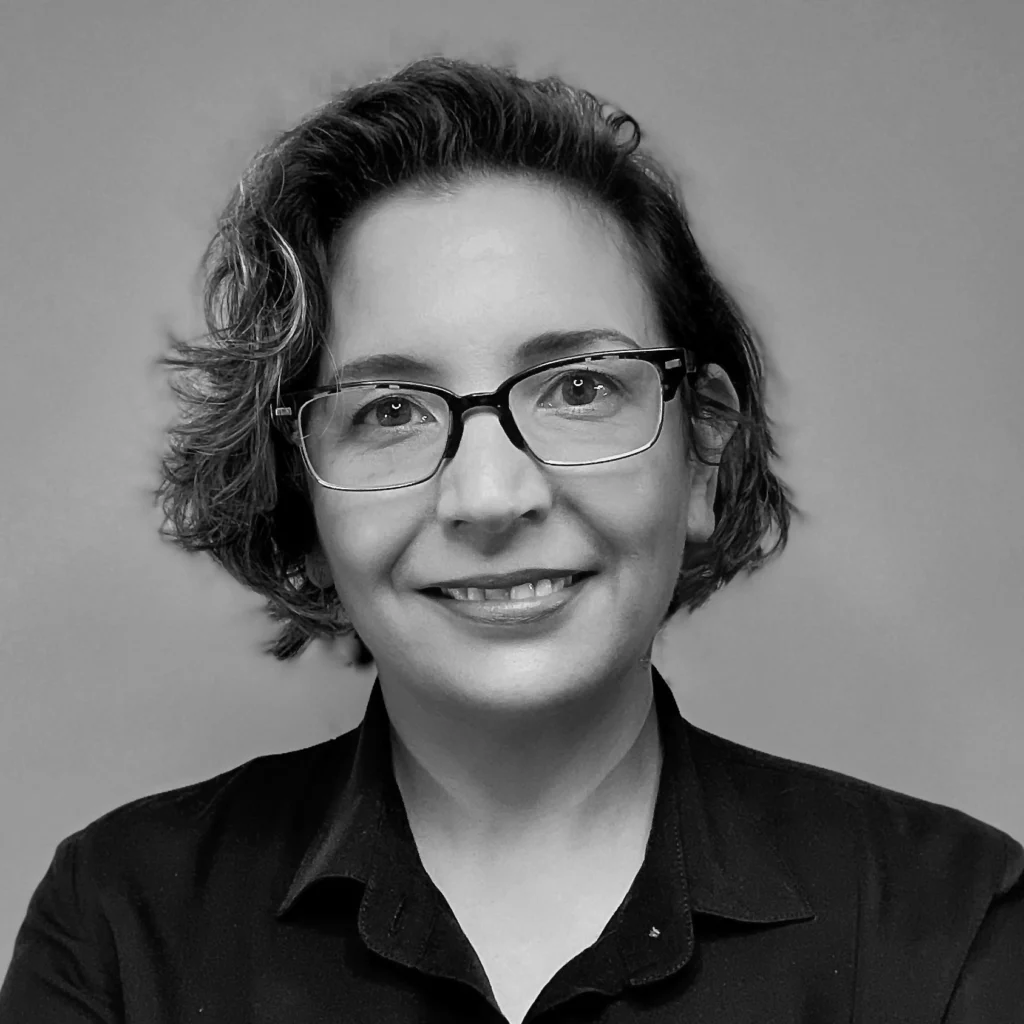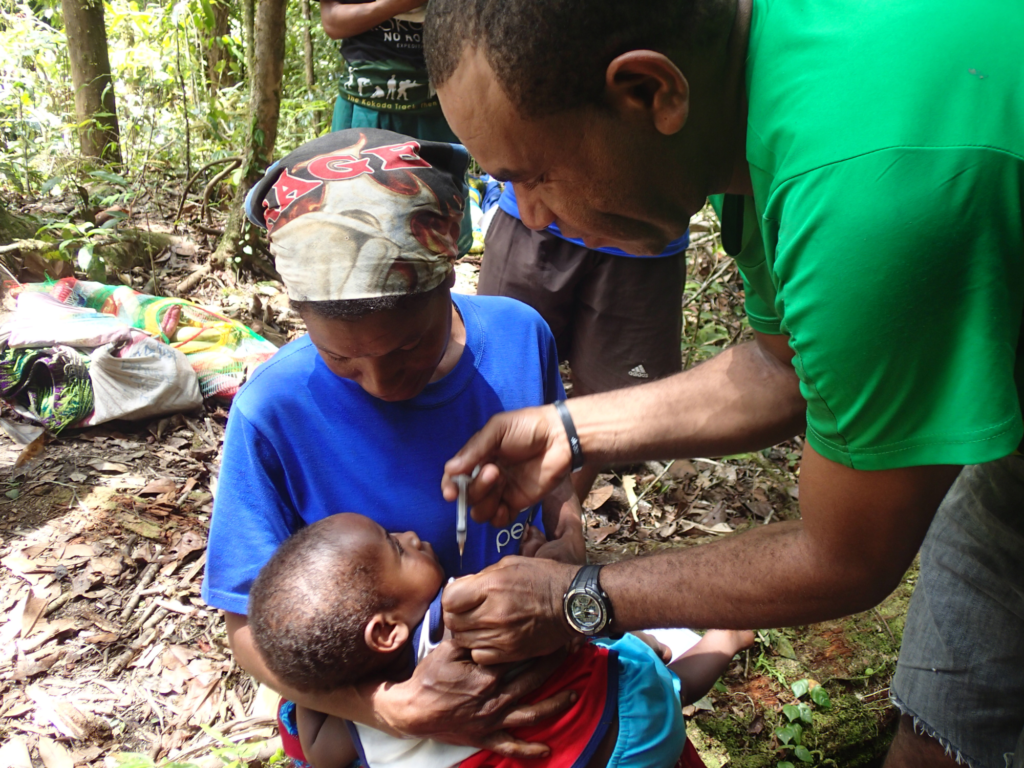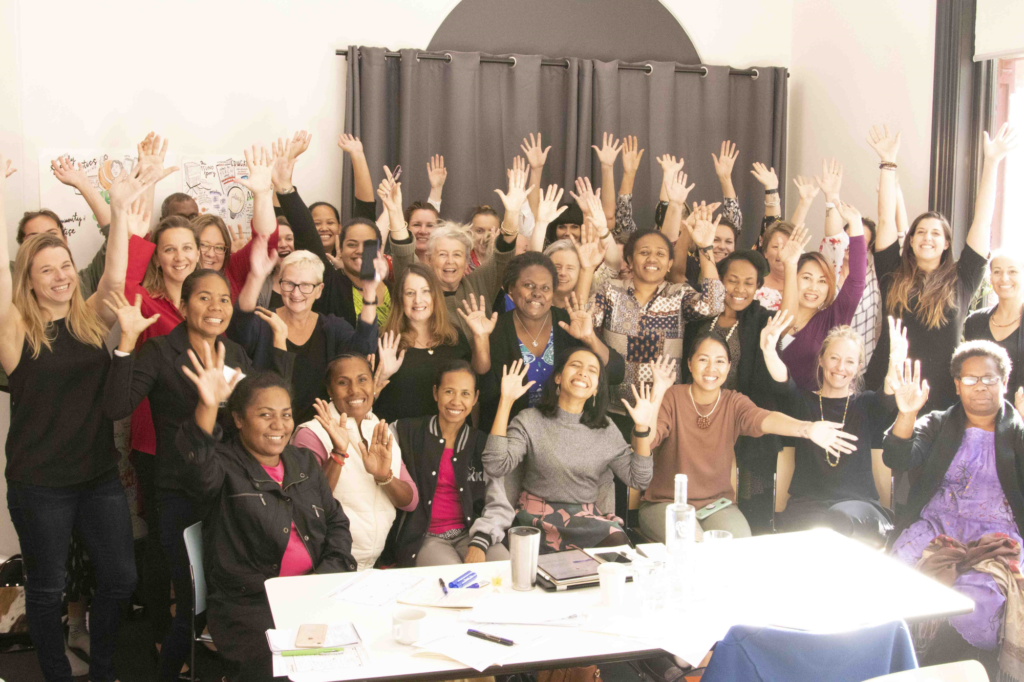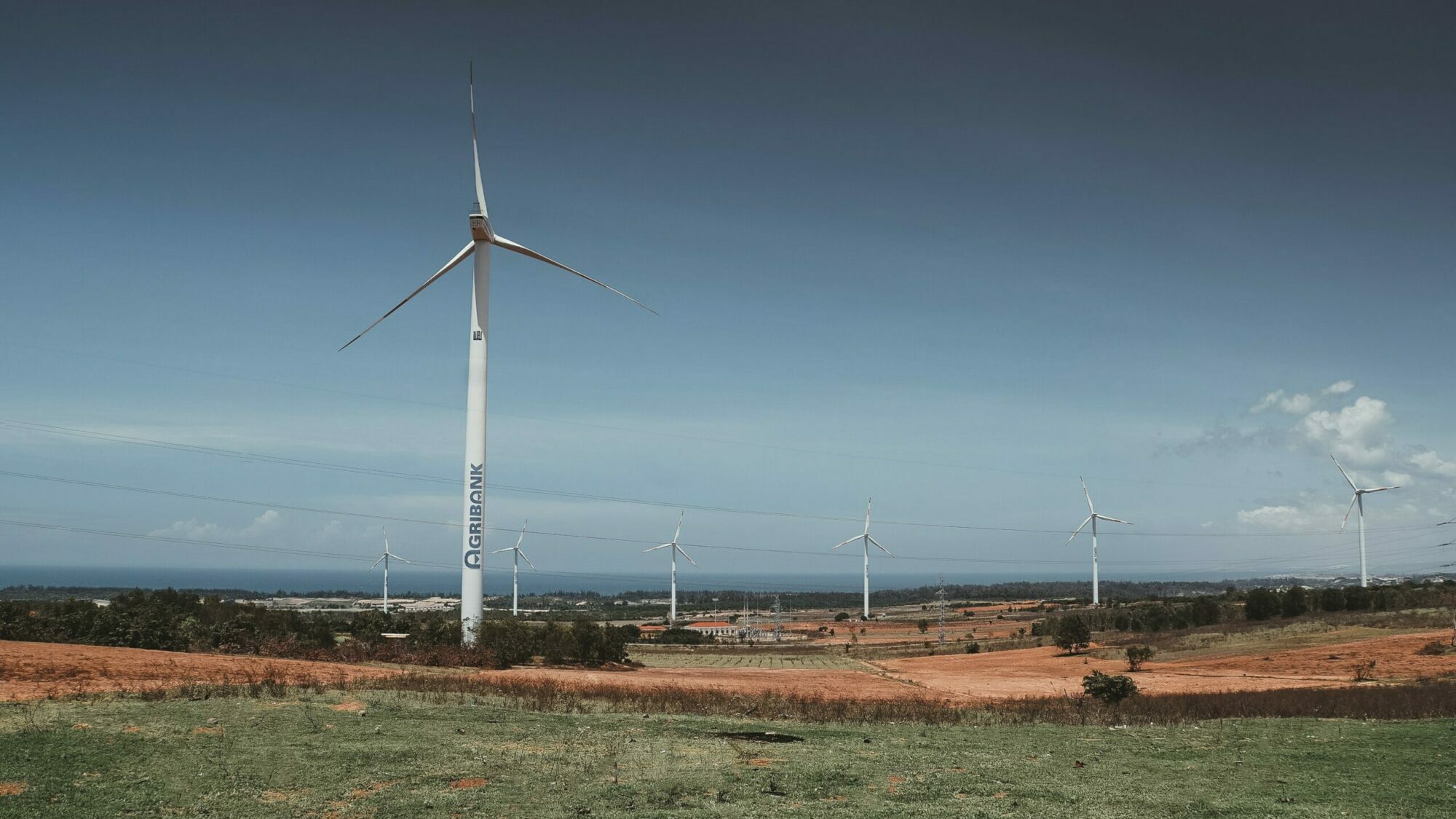
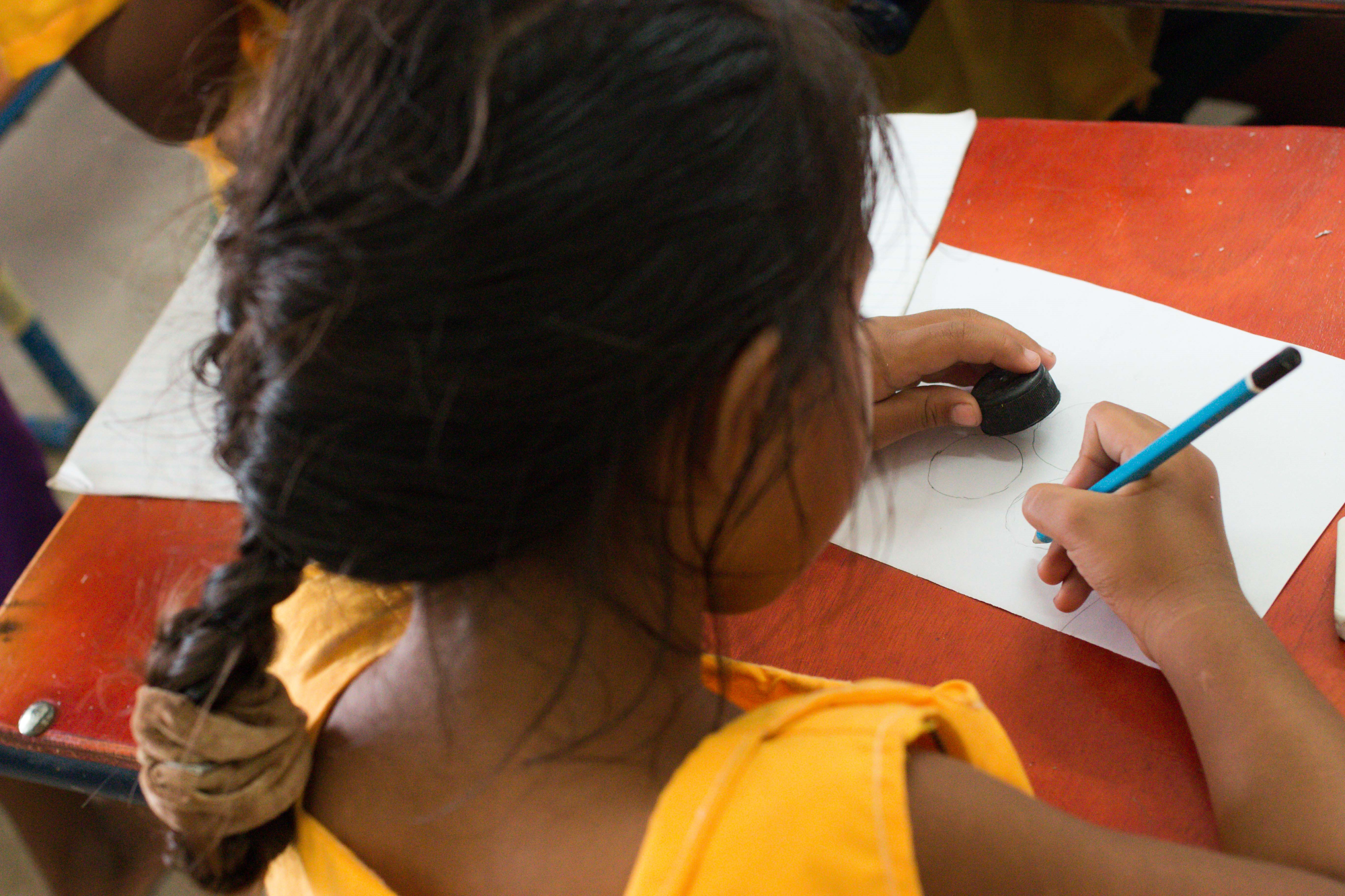
Today we are speaking with Dr Joanne Webber who has worked in disability inclusive education in Australia and across the Asia Pacific region for the past twenty years. She is the disability advisor on the Australian Government Kiribati Education Improvement Program, managed by Tetra Tech International Development.
Jo has experience in disability inclusion in primary, secondary and tertiary education context across all disability groups and loves working across education ministries, schools and directly with students with a disability. The rights and empowerment of people with a disability has been at the forefront of her work with a focus on meaningful inclusion and the capacity development of people with a disability to foster their access to and participation in education.
Jo has four post graduate qualifications in education including in secondary teaching, Her PhD in inclusive education focussed on factors that foster or hinder educational inclusion for students with a specific learning disability, and she has undertaken further research and work in the pacific region on general and literacy-based inclusion strategies for children with reading disabilities.
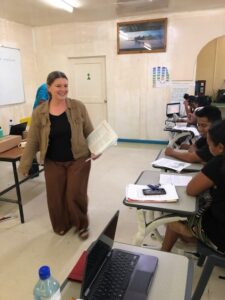
Photo: Joanne Webber providing training in the use of the Kiribati Disability Inclusive Teaching Guide.
Thank you for sitting down with us today Jo, can you tell us more about what disability inclusive education is?
Disability-inclusive education can be defined as ‘a student-centered approach that values the human rights and inclusion of students from all disability groups and encourages a range of inclusive teaching strategies, such as differentiation, to cater for the diverse learning needs of students with a disability’.
I think it is important to note however, that at the ministry and policy level there is a lot of discussion around the term inclusive education and it is often thought to mean disability-inclusive education. I therefore like to stress that when we are talking about disability-inclusive education we should actually include the term disability, and when we are talking inclusive-education that that has a much broader meaning around inclusion of all minority groups, minority languages, inclusion of girls and boys, minority religious or cultural groups, so all of your other minority groups encompass that term inclusive education.
There is often another issue around the assumption that special or segregated education means inclusive education and we often see that at the ministry budget level too. In Kiribati, where we are working, it is evident in the Ministry of Education (MoE), where the bulk of their inclusive education budget or budget for children with a disability is dedicated to the special education sector. So, we are working with the MoE around how that budget gets distributed and allocated to mainstream schools in their inclusive education initiatives as well.
What are some of the approaches to disability inclusive education you are using in Kiribati?
There are so many different approaches, different angles, different evidence bases that people can draw from to justify or rationalise how we include children with a disability. The approaches we have identified for Kiribati based on the context here that includes one special school, many remote outer islands, and is just at the very beginning stage of including children with a disability in mainstream schools.
We draw upon strong evidence-based approaches, of which differentiation is probably the most well respected. Differentiation caters for or uses different approaches to cater for all the different learning needs of children with a disability. Once we know the child, once we know how they learn best, what adjustments they need, we then know how to differentiate our teaching practices to cater for children with particular barriers or particular access requirements.
This goes hand in hand with child-centred teaching, which is a term that is often used in many developed and developing countries. From a disability-inclusion perspective, child-centred teaching is fabulous because we are encouraging and giving space for the teachers to get to know the child, get to know their strengths and their weaknesses, get to know their learning preferences, and get to know their barriers and what adjustments need to be put in place. A strong child-centered approach for children with a disability involves not only getting to know learning preferences but also individual barriers to help identify the inclusive teaching strategies, assistive devices, adaptive technology, other equipment that might help include a student with a disability.
I am happy to share that I have a vision impairment myself, and so I use adaptive technology including a screen reading program called Jaws (similar to NVDA a free version popular in Kiribati and other countries). In using that technology, it enables me and people with a vision impairment to participate on an equal basis with others in terms of access to reading materials and class participation. Such technology is critical in making sure we are inclusive of children with a disability.
Really, we are looking at a twin track approach to inclusion, where we are not only removing access barriers, and skilling up teachers, we are also skilling up students and looking at how to empower them and what equipment or devices they need to participate in their education. There is some very strong evidence around how capacity development of students with a disability to build their own skills to access technology and to be an independent learner within a mainstream classroom has been the most significant impact. So, making sure that children with a disability are gettin access to as many independent devices as possible really fosters their inclusion.
Differentiation can be a big cultural change for teachers, have you found challenges promoting its use?
The use of differentiation, which is used well in many settings, does require some practice change. Some teachers who use rope learning approaches or curriculum bound approaches have found it a real transformation to be embracing and having the confidence to embrace differentiation as a strong evidence-based teaching practice.
When I have the conversation around differentiation and any inclusive teaching approaches, I frequently take a step back and ask: ‘Outside of the classroom, how are you teaching your children to fish, or to weave baskets or mats?’. The response is often, ‘Oh, well they sit down when they are really little and they observe what we are doing, oh and we give them some grass to practise weaving first of all or we demonstrate different approaches, or we get the younger ones to work alongside the older ones to undertake simple tasks and mastering these before moving on to more complex tasks. We also find out the skills and interests of our children and divide up tasks accordingly rather than asking every child to do the same thing at the same time. ’
Families are actually using a whole lot of inclusive teaching practices including differentiation when they are catering for teaching different age groups and ability levels in how to perform family or community activities. Culturally speaking, differentiation and inclusive practices align with many activities outside the classroom. Just because many Pacific Islands have been provided with a range of rote learning, curriculum-bound styles from Australia, New Zealand and England in the past, it doesn’t mean that these practices need to continue in the classroom today. In fact, these countries are now using differentiation, mixed ability learning, co-operative and experiential learning practices and have abandoned many of the practices they taught Pacific Islands decades ago. We now have an opportunity to support local teachers and teacher training colleges to embrace culturally strong practices and current evidence-based practices to foster inclusive quality classrooms.
We have seen teachers in Kiribati use great differentiation approaches and develop real confidence around their ability to manipulate the curriculum and really take charge of what they are teaching and testing learning outcomes as they go and see how they can use different techniques to cater for different students.
What are the advantages of special schools versus mainstream schools for students with disability in Kiribati?
In terms of special schools, we are seeing some strengths is where they are creating a community of acceptance and inclusion, where they are catering for specific disability groups very well, such as children who are deaf. One real strength of the Kiribati School and Centre for Children with Special Needs has been to capture the out of school population of children with a disability. And their increasing enrolment has reflected these students joining the school system (have 225 students enrolled). So, the special school has been a first step where the families have been happy to send their children.
Within the mainstream space we are seeing really strong growth in Kiribati where children without a disability are learning about disability and learning about inclusion. We have got some beautiful examples of students who are deaf, learning in a mainstream school and their classmates are learning to sign, so they are creating cultural change and community change around how receive and include and cater for children with a disability within a mainstream environment. And we are seeing brothers and sisters studying together and not being separated with one going to a special school and one going to a mainstream school. One of the other benefits we are seeing when we mainstream early, is that children are much closer to their same age peers. I know of a lot of cases across the Pacific including in Kiribati, where special schools take two years to teach every year level of the curriculum. This means that children with a disability are much older when they are transitioning into high school.
What are some of the issues transitioning students from special to mainstream education?
Some of the issues that we have encountered are a reluctance to release students with a disability from special schools into mainstream schools. The special school has really promoted itself and done a fantastic job of saying ‘we are a safe and an accepting place for children with a disability’.
As I mentioned, one issue is that children in special schools are typically of different age, so having young adults in their twenties in year ten because there has been no place for them within mainstream schools. We have really been working closely with a number of mainstream schools on disability inclusion, but we also know that some children with a disability are at a different academic level and age level to their classmates.
School readiness can be another issue—how ready is the school, what barriers do we need to remove, what are some of the attitudinal, physical access or teacher capacity barriers that we need to address to get the school ready before we mainstream children with a disability?
What are some of the initiatives being implemented in Kiribati to overcome these issues?
Together with the inclusive education working group we wrote up a Student Transition Plan that identifies the steps required to prepare a student for transition and some of the questions to ask a school as well about school readiness to accept a child with disability.
We have also developed Kiribati’s first ever Individual Education Plan based on International models and consultation. We are working really closely with Te Toa Matoa, the only Disabled People’s Organisation in Kiribati and the special school to develop an IEP template that would be user friendly and address access requirements of children with disability. We first developed this a few years ago and have just updated it ready for 2019.
We also have model inclusion schools, we have three primary, two junior and one secondary. We have worked with these schools on building capacity of teachers to integrate the learning needs of children with disability. Those schools have become a wonderful transition point from the special school into the mainstream. With all of this awareness training, acceptance, building teacher strategies, making sure that the schools have access features, and we have also run some classmate awareness activities around inclusion. The model inclusion schools have been a nice transition from the special schools where families are feeling confident and sharing with us that they are confident to send their child to a mainstream school as long as it is at one of the model inclusion schools. Because they know that a lot of work has gone into preparing those schools to be disability friendly schools.
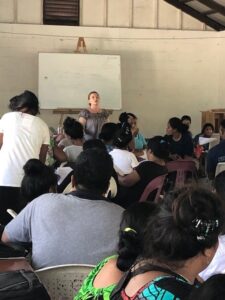
Photo: Joanne Webber teaching inclusive education in the Advanced Diploma of Education at Kiribati Teachers College.
Can you explain what it means to prepare schools in practice?
We know that many schools still have limited access features, which actually formed part of the rationale for us choosing particular Model Inclusion Schools, picking those schools with the best features such as wheel chair accessible toilets, covered walkways, level concrete pathways to get from room to room.
In many contexts you will see negative attitudinal barriers to disability inclusion. What has been wonderful at the schools we have been working with and especially the model schools are incredibly welcoming attitudes. We even had one teacher come up to us quite recently and say: ‘I have particularly asked the principal to enable me to teach a class with children with a disability because I want to improve and extend my teaching skills’. Now we are finding teachers saying that we are happy to have children with a disability we just don’t know what to do, we don’t know how to teach them all, we don’t have the strategies. So, we are working really closely with the model inclusion schools at the teacher level to build a whole suite of teacher education inclusion strategies.
Can you talk more about the institutional initiatives being implemented in Kiribati?
One of the most important pieces of work that we have been doing at the moment is the Certificate III Teacher Assistant course at Kiribati Teachers’ College (KTC). We have had a good relationship with KTC around building a brand new course that they have never taught before to skill up a range of teacher assistants to work first of all in the model inclusion schools but ultimately our vision is that that course will continue this year and the number of teacher assistants will continue to grow and become a resource for the entire country.
One other really exciting initiative has been the Ministry of Education Inclusive Education Officer role. We are working on building capacity in this role to support this role so as to make our work more effective. This has been a really valuable addition to the MoE, where previously they did not have any staff dedicated to inclusive education. Nnenne has been undertaking tasks that we would have been previously doing on our own, and now we are doing them together and she is taking the lead on them such as the development of IEPs for each mainstream student with a disability.
One other piece of work Nnenne has been heavily involved in is a hearing testing program. She has supported an international team of audiologists and a local team of two ear nurses, as we know that hearing impairment is over represented in Kiribati schools. The hearing testing program enabled us to test every child at year 1 and any children identified by their classroom teacher using a teacher administered identification tool, to identify students who might be at risk of a hearing loss, across the three model primary schools. Many children have been tested across the three schools, with one school alone identified eight children who needed hearing aids to support their participation in school. It has been really significant to identify those children who are struggling to learn because of a hearing loss. So, this is an example of one of those initiatives that previously we would not have had the time to manage on our own.
Moving forward, what work will KEIP be doing?
The Certificate III Teacher Assistant program has been a positive initiative that still requires some fine tuning, but we are working very closely with KTC to strengthen that program further for 2019.
We also have a ‘Kiribati Disability Inclusive Teaching Guide’ with numerous teaching strategies that has just been updated based on extensive consultation across schools and Te Toa Matoa. They have all provided some really positive feedback on how to further improve the guide.
At the school level next year, we will have our teacher assistants, we have already introduced Kiri sign language interpreters, and are hoping to strengthen their role. Like in many countries, sign language interpreters are few and far between, so we are working hard to ensure we get quality sign language interpreters within the schools. We are also providing ongoing professional development to the classroom teachers as well and packaging the professional development so that participants can gain formal qualifications for all training programs including our new alternative formatting training.
Further to the resourcing of the model inclusions schools we have just purchased some scanning software and equipment to produce optical character recognition scanning of hardcopy resources into accessible word format resources. So, for students who are blind that conversion of course material from an inaccessible version to an accessible version has been really significant for the inclusion of students who are blind or vision impaired.
We hope to continue building on this work based on the priorities of Te Toa Matoa, the Kiribati School and Centre for Children with Special Needs and the Model Inclusion Schools.
